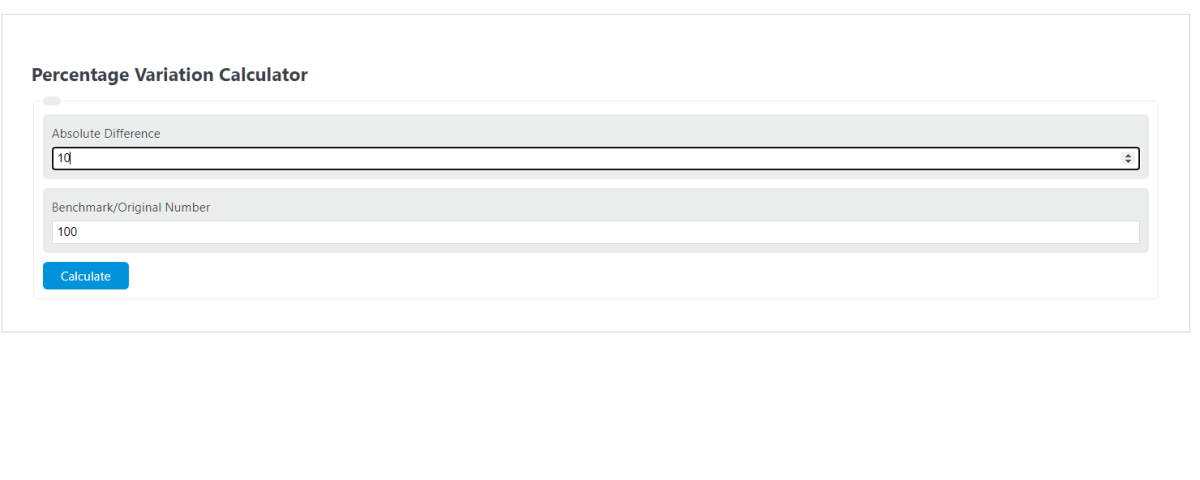Enter the absolute difference and the benchmark/original value into the calculator to determine the percentage variation.
- Joint Variation Calculator
- Direct Variation Calculator
- Absolute Difference Calculator
- Absolute Change Calculator
- Variation Ratio Calculator
Percentage Variation Formula
The following formula is used to calculate a percentage variation.
PV = AD / B *100
- Where PV is the percentge variation (%)
- AD is the absolute difference between the original number and the true number
- B is the benchmark or original number
To calculate the percentage variation, divide the absolute difference between numbers by the reference number, then multiply by 100.
What is a percentage variation?
A percentage variation is a measure of the ratio of the difference between two numbers compared with a benchmark or original number.
In other words, it’s the ratio of the difference to benchmark times 100.
How to calculate percentage variation?
The following example shows the steps to calculate a percentage variation.
First, determine the absolute difference between the number and the benchmark. For this example, the number is 100 and the benchmark is 125. The absolute difference between these numbers is:
AD = | X – Y | = | 100 – 125 | = 25.
Next, use the formula above, along with the benchmark to calculate the percentage variation.
PV = AD / B *100
PV = 25 / 125 * 100
PV = 20% variation
